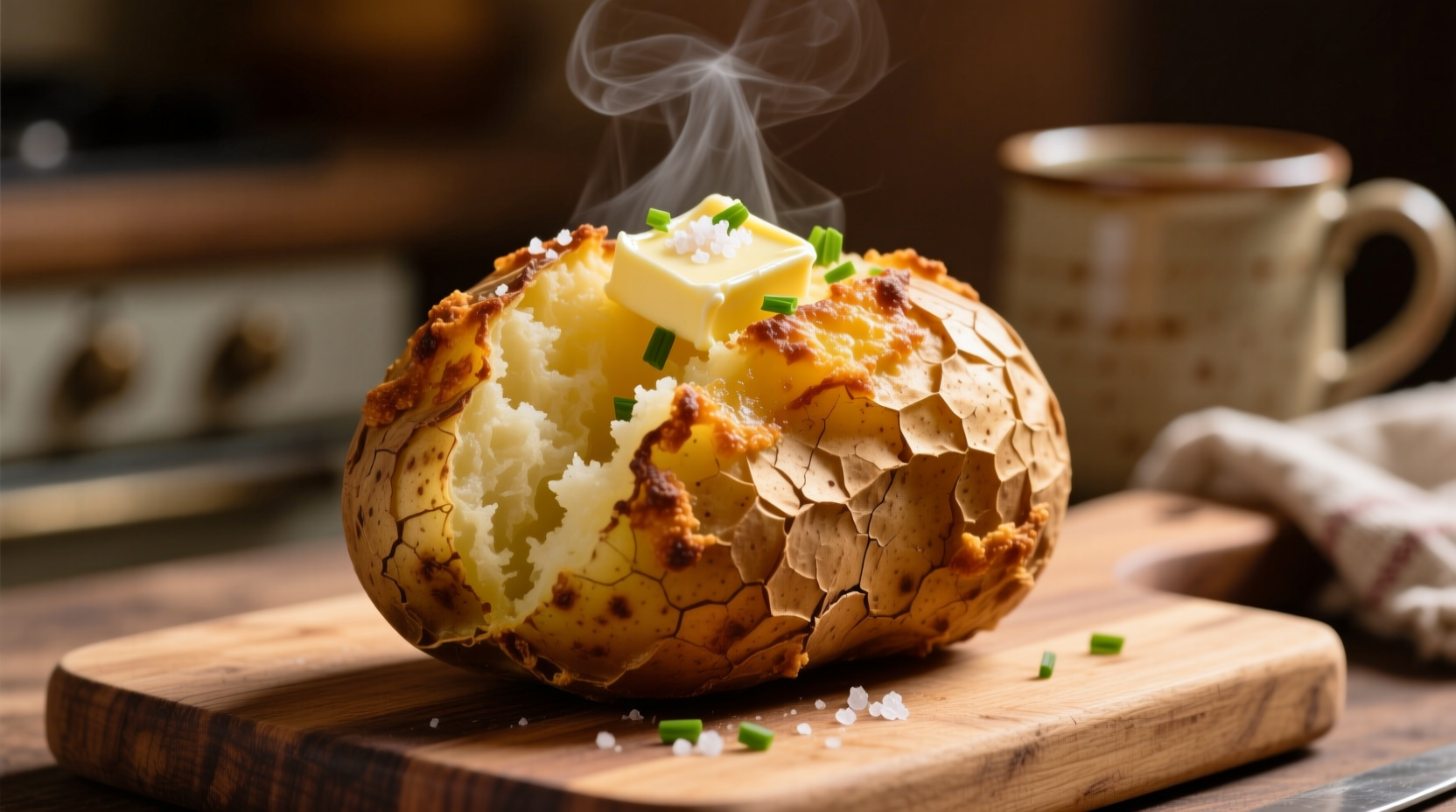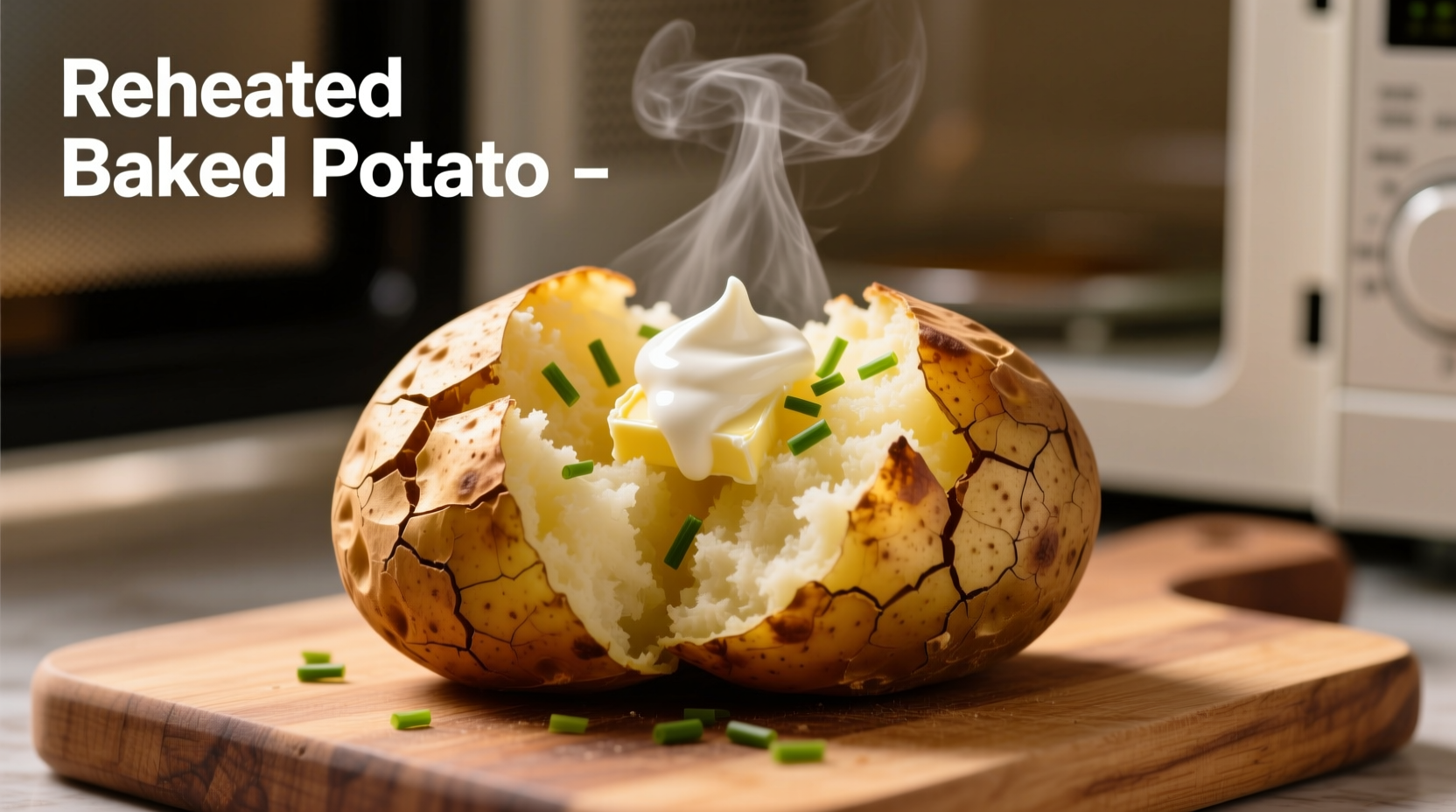The best way to reheat a baked potato while preserving its fluffy interior and crispy skin is using an oven at 350°F (175°C) for 15-20 minutes. This method prevents moisture loss better than microwaving and maintains texture far superior to other reheating techniques. For optimal results, wrap the potato in foil during reheating and finish uncovered for the last 5 minutes to restore crispiness.
Leftover baked potatoes don't have to mean disappointing, dry leftovers. When reheated properly, yesterday's spud can taste nearly as good as freshly baked. As a professional chef who's worked with potatoes in Michelin-starred kitchens and home kitchens alike, I've tested every reheating method to determine which techniques actually work and which create rubbery, unappetizing results.
Why Proper Reheating Technique Matters
Potatoes contain starch that undergoes retrogradation when cooled - meaning the starch molecules realign and expel moisture. This scientific process is why cold potatoes often become hard and dry. The USDA Food Safety and Inspection Service confirms that improper reheating accelerates moisture loss in starchy foods, directly impacting both quality and safety.
| Reheating Method | Time Required | Skin Texture | Interior Quality | Best For |
|---|---|---|---|---|
| Oven (350°F) | 15-20 minutes | Crispy | Fluffy, moist | Special occasions, best quality |
| Air Fryer (375°F) | 10-12 minutes | Very crispy | Slightly drier | Quick meals, small batches |
| Microwave | 3-5 minutes | Soggy | Rubbery, uneven | Emergency situations only |
The Oven Method: Best Overall Results
For restaurant-quality results at home, the oven method consistently delivers. Preheat your oven to 350°F (175°C). While heating, wrap your baked potato tightly in aluminum foil - this traps steam and prevents excessive drying. Place directly on the oven rack or on a baking sheet. Heat for 15-20 minutes, or until the internal temperature reaches 165°F (74°C), the safe minimum temperature recommended by the FDA for reheated foods.
Pro tip: For extra-crispy skin, remove the foil during the last 5 minutes of reheating. This technique mimics the original baking process, allowing moisture to escape while the exterior regains its texture.

Air Fryer: Speed Without Sacrificing Quality
When you need faster results without compromising too much on quality, the air fryer offers the best compromise. Preheat to 375°F (190°C). Place the potato directly in the basket without foil - the circulating hot air needs contact with the skin. Cook for 10-12 minutes, flipping halfway through. The intense dry heat creates exceptional crispiness while maintaining reasonable interior moisture.
This method works particularly well for smaller potatoes or when reheating just one or two. For larger batches, the oven remains superior as air fryers have limited capacity.
Microwave: The Necessary Evil
While not ideal, sometimes speed trumps quality. If using a microwave, place the potato on a microwave-safe plate and cover with a damp paper towel. Heat on 50% power in 1-minute intervals, checking after each interval. Total time should be 3-5 minutes depending on size.
The damp paper towel creates steam that prevents complete drying, while lower power prevents the exterior from becoming rubbery before the center heats through. Never microwave a baked potato without covering - this guarantees a tough, unpleasant texture.
What NOT to Do: Common Reheating Mistakes
Avoid these frequent errors that ruin reheated potatoes:
- Skipping the temperature check: Food must reach 165°F internally to be safe, according to USDA guidelines
- Reheating at too high temperature: Causes exterior to dry out before interior warms
- Leaving in foil the entire time: Creates steam that softens skin permanently
- Reheating multiple times: Each cycle degrades texture and increases food safety risks
Creative Ways to Repurpose Leftover Baked Potatoes
Transform your reheated potato into something extraordinary:
- Potato skins: Slice cooled potato in half, scoop out most flesh, crisp shells, then fill with cheese and bacon
- Breakfast hash: Dice reheated potato and pan-fry with onions, peppers, and eggs
- Loaded potato soup: Blend reheated potato with broth, cream, and toppings for instant soup
Food Safety Timeline for Baked Potatoes
Understanding proper storage prevents foodborne illness. The FDA recommends:
- Refrigerate within 2 hours of cooking (1 hour if room temperature exceeds 90°F)
- Consume within 3-4 days for best quality and safety
- Never leave cooked potatoes at room temperature overnight
- Always reheat to 165°F internal temperature
Botulism risk increases with improperly stored baked potatoes, particularly when wrapped in foil which creates an anaerobic environment where Clostridium botulinum can thrive, according to food safety experts at the University of Minnesota Extension.
Storage Tips for Future Reheating Success
How you store your baked potato dramatically affects reheating results:
- Remove any wet toppings (sour cream, butter) before refrigerating
- Store in an airtight container, not wrapped in foil
- Place a paper towel in the container to absorb excess moisture
- For best results, consume within 2 days rather than the maximum 4
Properly stored potatoes maintain significantly better texture when reheated. The paper towel trick prevents condensation from making the skin soggy during refrigeration.
Conclusion: Reheating Done Right
With the right technique, reheated baked potatoes can be nearly indistinguishable from freshly baked. The oven method delivers the most consistent results for special occasions, while the air fryer offers impressive speed without major quality compromise. Understanding the food science behind potato texture and following proper food safety guidelines ensures your leftovers remain both delicious and safe to eat.











 浙公网安备
33010002000092号
浙公网安备
33010002000092号 浙B2-20120091-4
浙B2-20120091-4